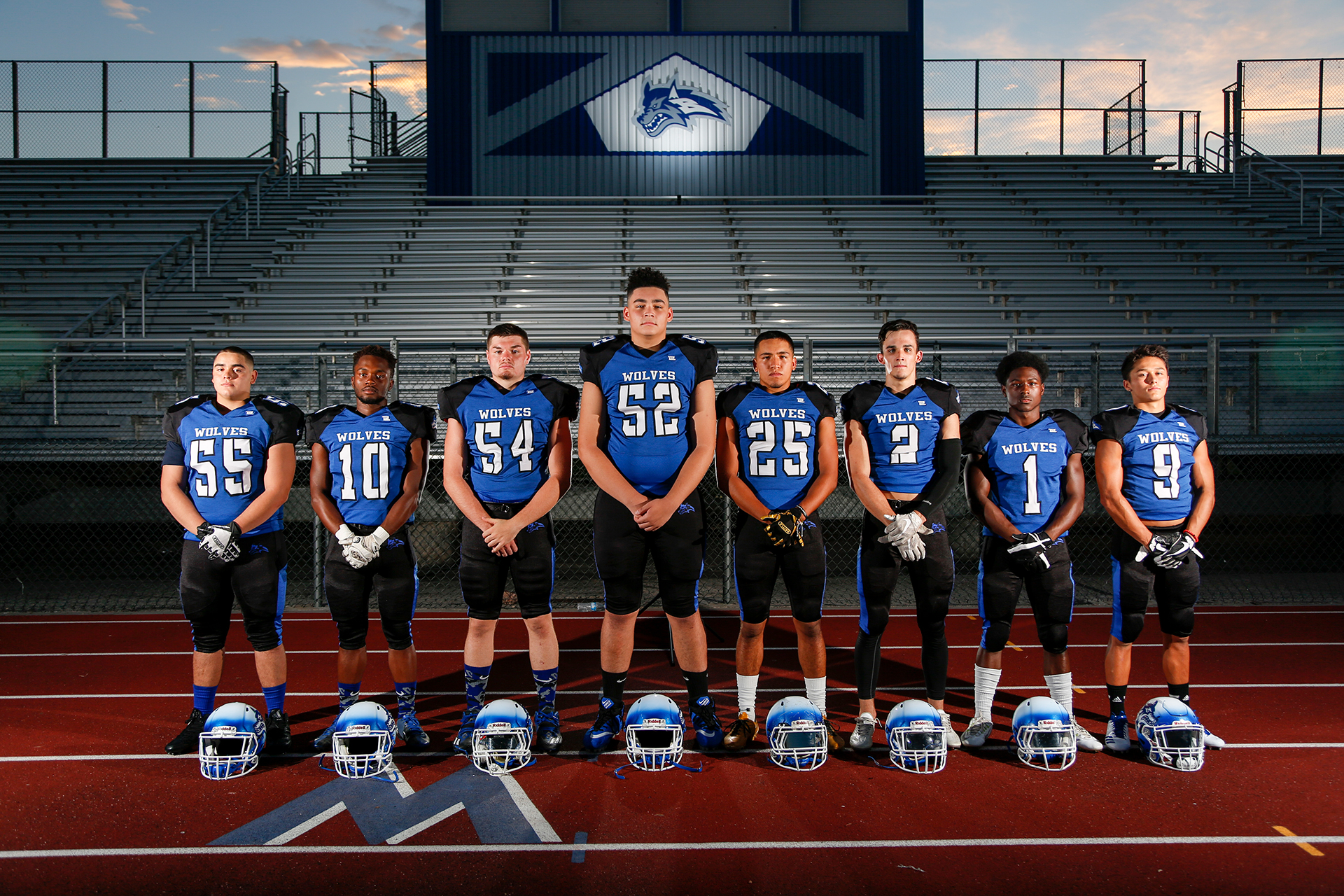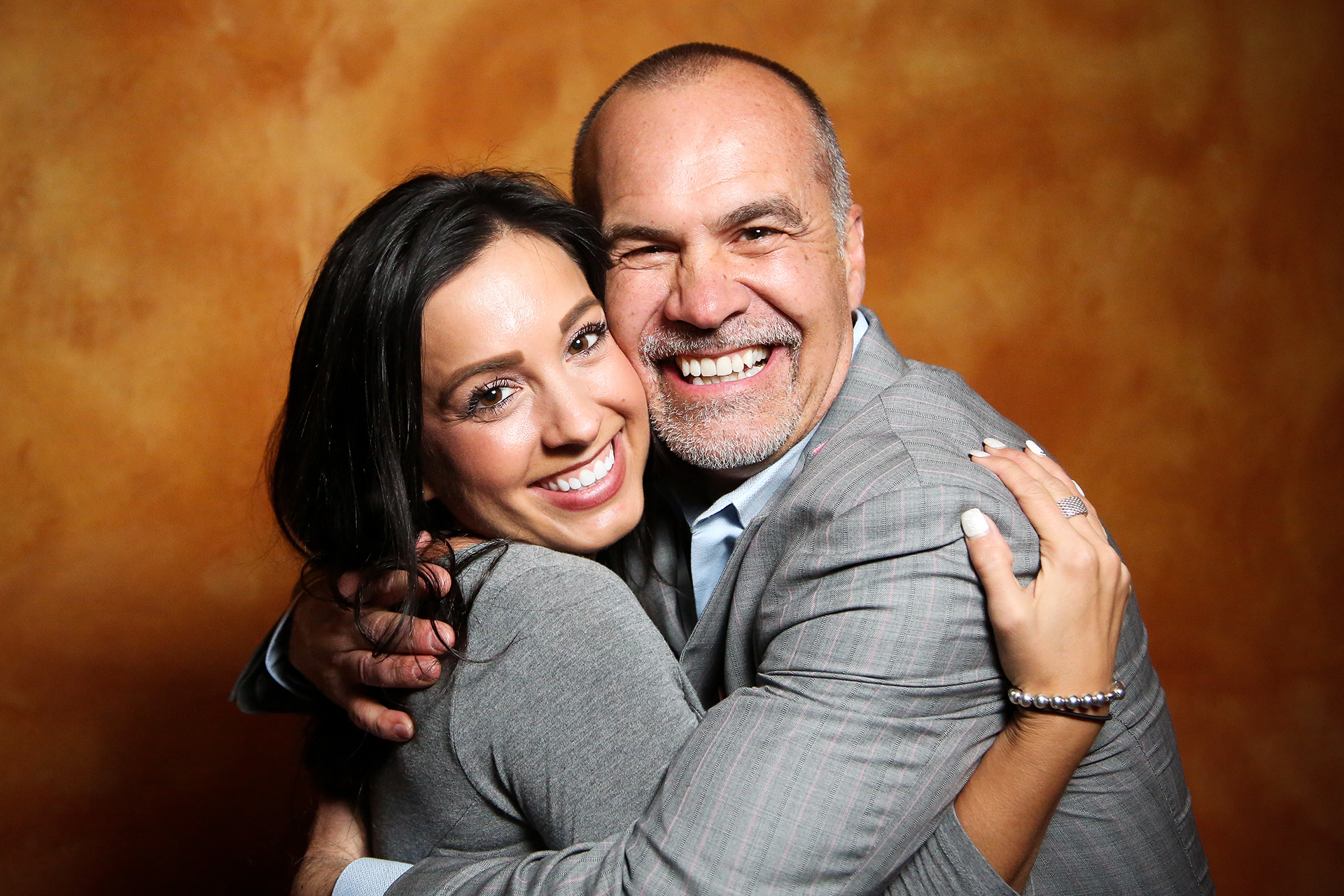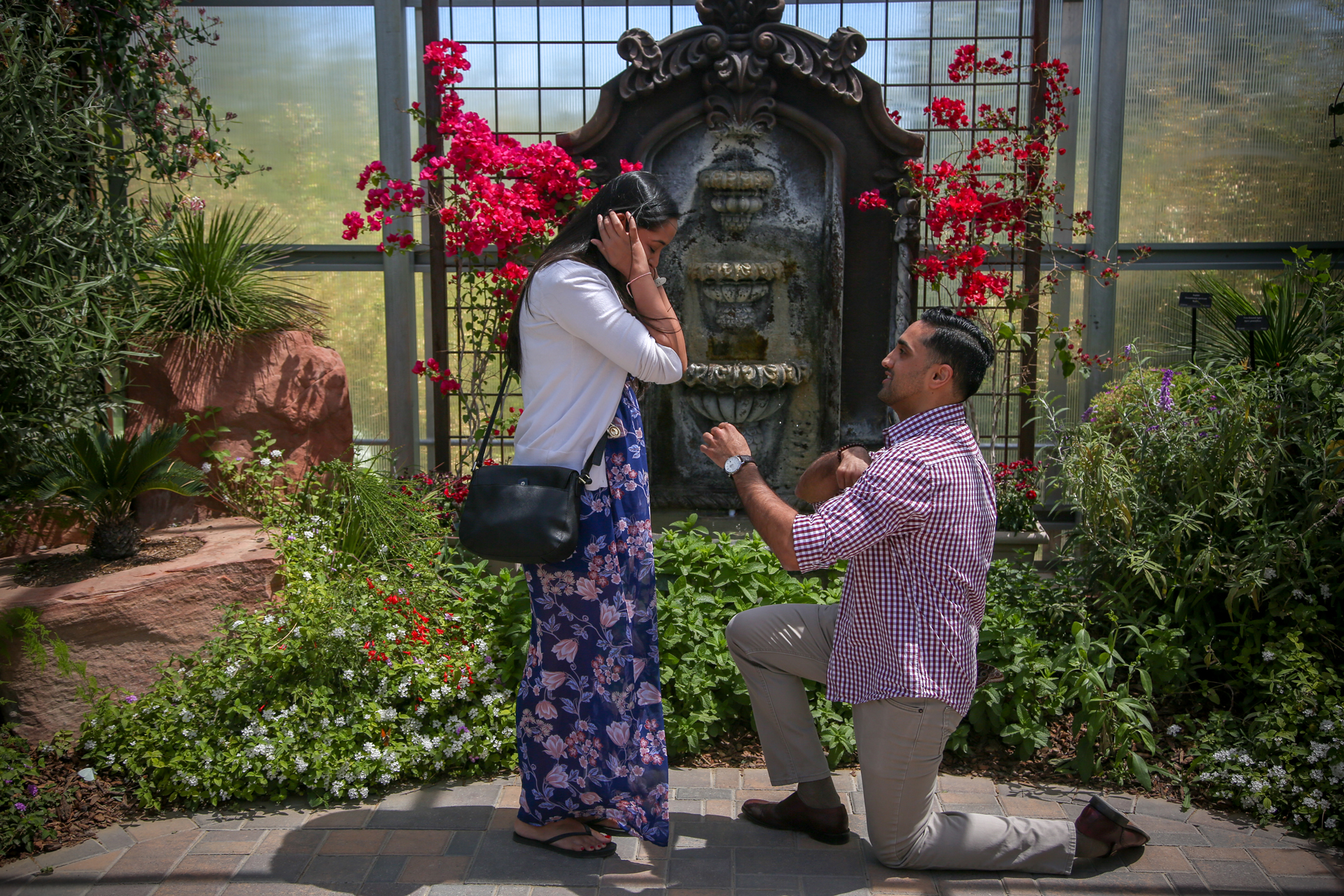Organization for a Las Vegas Portrait Photographer
Whether you’re on a shoot for an individual portrait or photographing an entire family, it’s crucial to stay organized. Not just organized with your gear, but organized with your time. What good is an organized photography bag if you don’t make the event on time because you forgot to schedule it in a calendar? Chaos builds off of chaos, which is why if you remain organized in the first place, you won’t have to deal with any large problems (within your control) at a shoot.
First, keep all of your upcoming events in the calendar app on your phone, and set your notifications to alert you the day before. This will ensure that you’re up to date on any shoots. Next, find the best, most efficient way to pack your gear bag. Once you’ve packed it to your liking, continue packing it that way. Repetition builds habits, and it’s important to get in the habit of taking care of your photography gear and your schedule. It’ll pay off in the long run.
Organization Tips for a Las Vegas Event Photographer
Events can be extremely hectic. Whether it’s a family-oriented get-together or a corporate event on the strip, it can be quite overwhelming to keep track of everything while taking excellent shots. To prevent losing your mind mid-shoot, you need to familiarize yourself with the venue.
You’ve heard that Vince Lombardi quote before. “5 minutes early is on time. On-time is late. Late is unacceptable.” When you’re a photographer, try getting to your venue at least 20 minutes early. It sounds like overkill, but it’ll pay off when you’re not stressed out and able to maximize your time on the shoot. Clients are paying you for excellent shots, and you don’t want to let your clients down. Next, keep track of your gear. You won’t be able to shoot an event for 5 hours with your photography bag slung over your shoulder. Not only is it terrible for your posture, but you’ll need both hands to use your camera, retrieve gear from nearby, help with flashes, etc. Keep your gear in a unique place that’s out of sight and discreet. If you leave it in a corner or under a table that’s off the beaten path then you’ll be able to grab something from it if necessary.
This last tip isn’t really for the organization, but it’ll certainly help when you’re on a shoot. Stay positive, and flash a friendly smile. People want to feel comfortable around their photographer, and it’ll be difficult for them if you’re not comfortable with yourself. When you’re on a shoot, the priority is obviously to get the best shots possible. But you can prioritize your photography without sacrificing a good attitude and a winning smile.
The Importance of Staying Organized as a Photographer
In the fast-paced world of photography, staying organized is not just a luxury – it’s a necessity. As a Las Vegas photographer, you need to be prepared for any situation and have a system in place that allows you to easily access your equipment and files. The last thing you want is to miss out on capturing the perfect shot because you can’t find the right lens or spend hours searching for a specific image in a sea of digital files.
Being organized not only helps you deliver outstanding results to your clients but also reduces stress and allows you to focus on your creativity. By implementing effective organizational strategies, you can streamline your workflow, meet client deadlines, and ensure that you’re always one step ahead of the game.
Organizing Your Digital Files and Folders
One of the first steps to staying organized as a Las Vegas photographer is to establish a system for managing your digital files. With the sheer volume of images you capture, it’s crucial to have a structure that allows you to easily locate and retrieve specific photos when needed. Here are a few tips to help you organize your digital files effectively:
Create a Folder Hierarchy: Start by creating a hierarchy of folders that reflects your shooting categories or clients. For example, you could have main folders for weddings, fashion shoots, events, and personal projects. Within each main folder, create subfolders for specific shoots or clients. This hierarchical structure will make it easier to navigate through your files.
Use Descriptive File Names: When saving your photos, use descriptive file names that include relevant information such as the location, event name, or client’s name. This will make it easier to search for specific images later on. Avoid generic file names like “IMG_001.jpg” that provide no context.
Organize by Date or Event: Consider organizing your photos by date or event. This can be particularly useful if you shoot multiple events or sessions in a day. Create folders for each shoot, and within each folder, sort the images chronologically. This way, you can quickly locate photos from a specific date or event.
By implementing these practices, you can ensure that your digital files are well-organized, making it easier to access and manage your photos efficiently.
Creating a System for Naming and Labeling Your Photos
In addition to organizing your digital files, having a consistent and efficient system for naming and labeling your photos is vital. This will not only help you find specific images quickly but also save you time when delivering the final photos to your clients. Here are some best practices for naming and labeling your photos:
Use a Clear and Consistent Naming Convention: Develop a clear and consistent naming convention for your photos. This could include elements such as the client’s name, shoot date, and a unique identifier. For example, if you’re shooting a wedding for John and Lisa on April 25, 2022, you could name the photos as “JL_Wedding_04252022_001.jpg,” “JL_Wedding_04252022_002.jpg,” and so on.
Include Metadata and Keywords: Take advantage of metadata and keywords to further organize your photos. Most photo editing software allows you to add metadata such as the location, event, and keywords to your images. This makes it easier to search for specific photos based on these criteria.
Use Color Labels or Flags: Many photo management software tools allow you to use color labels or flags to mark your photos. For example, you could assign a red label to photos that need further editing, a green label to photos that have been fully edited, and a yellow label to photos that have been delivered to the client. This visual system can help you keep track of your progress and prioritize your tasks.
By implementing a consistent naming and labeling system, you can easily locate specific images and maintain a streamlined workflow throughout the editing and delivery process.
Using Photography Project Management Tools
To stay organized as a Las Vegas photographer, consider using photography project management tools. These tools can help you keep track of your projects, tasks, and deadlines, ensuring that you stay on top of your workload and deliver exceptional results to your clients. Here are some popular project management tools that photographers can benefit from:
Trello: Trello is a versatile project management tool that allows you to create boards, lists, and cards to organize your projects. You can create a board for each shoot or client and add lists for tasks such as pre-shoot preparations, editing, and delivery. Within each list, you can create cards for individual tasks and set due dates and labels. This visual approach helps you see the big picture and stay organized.
Asana: Asana is a powerful project management tool that offers features specifically designed for photographers. You can create projects for each shoot or client and add tasks with due dates, assignees, and attachments. Asana also allows you to create templates for recurring shoots, making it easier to set up your workflow for similar projects.
Studio Ninja: Studio Ninja is a comprehensive studio management software specifically designed for photographers. It offers features such as client management, contract creation, and signing, invoicing, and workflow automation. With Studio Ninja, you can streamline your entire photography business, from booking to delivery, and ensure that nothing falls through the cracks.
By utilizing project management tools, you can centralize your tasks, deadlines, and client information, keeping everything organized and easily accessible in one place.
Maintaining a Schedule and Calendar for Bookings and Shoots
As a Las Vegas photographer, your schedule can fill up quickly with bookings and shoots. To stay organized and avoid double bookings or missed appointments, it’s essential to maintain a schedule and calendar. Here are some tips to help you effectively manage your bookings and shoots:
Use a Digital Calendar: Utilize a digital calendar to keep track of your bookings, shoots, and appointments. Popular calendar apps such as Google Calendar or Microsoft Outlook offer features such as color-coding, reminders, and syncing across multiple devices. This way, you can access your schedule from anywhere and ensure that you never miss an important event.
Block Out Time for Editing and Admin Tasks: Don’t forget to allocate time in your schedule for editing and administrative tasks. Editing can often take longer than anticipated, so it’s important to set aside dedicated time for this crucial step. Additionally, schedule time for tasks such as responding to client inquiries, updating your portfolio, and managing your finances.
Set Reminders and Notifications: Take advantage of reminders and notifications to stay on top of your schedule. Set up reminders for important deadlines, appointments, and shoot preparations. This will help you stay organized and ensure that you’re always prepared.
By maintaining a schedule and calendar, you can effectively manage your bookings and shoots, avoid conflicts, and maintain a healthy work-life balance.
Organizing Your Equipment and Gear
Being organized as a Las Vegas photographer goes beyond digital files and schedules – it also involves organizing your equipment and gear. When you’re constantly on the move, having a well-structured system for storing and accessing your equipment is crucial. Here are some tips to help you keep your gear organized:
Invest in a Quality Camera Bag or Backpack: A good camera bag or backpack is essential for keeping your equipment safe and organized while on the go. Look for a bag that offers compartments and dividers to separate your cameras, lenses, and accessories. This will ensure that everything has its place and is easily accessible when needed.
Label Your Equipment: Consider labeling your equipment, especially if you work with multiple cameras or similar-looking lenses. Use labels or colored tape to mark each item with its purpose or unique identifier. This will save you time and prevent confusion when searching for specific gear during a shoot.
Create an Equipment Checklist: Develop a checklist of essential equipment for different types of shoots. This will help you ensure that you have everything you need before heading out to a shoot. As you pack your gear, tick off each item on the checklist to avoid leaving anything behind.
By organizing your equipment and gear, you can save time, prevent damage, and be prepared for any shooting situation.
Managing Client Information and Contracts
As a professional Las Vegas photographer, it’s crucial to have a system for managing client information and contracts. Keeping track of client details, shoot requirements, and signed contracts is essential to provide excellent customer service and protect your business. Here are some tips for effectively managing client information:
Use a Customer Relationship Management (CRM) System: Consider using a CRM system to keep track of client information, inquiries, and shoot details. A CRM tool allows you to centralize all client-related information, including contact details, shoot preferences, and communication history. This makes it easier to provide personalized service and maintain strong relationships with your clients.
Create Templates for Contracts and Release Forms: Develop templates for contracts, model release forms, and other legal documents that you frequently use. This saves you time and ensures consistency in your agreements. You can customize these templates for each shoot, including specific shoot details and terms.
Implement a Secure File Storage Solution: Protect your client’s information and contracts by implementing a secure file storage solution. Cloud storage services such as Google Drive or Dropbox offer encryption and access controls to keep your files safe. By storing your files securely, you can easily access and share them with your clients when needed.
By effectively managing client information and contracts, you can provide a professional and organized experience to your clients, fostering trust and loyalty.
Backing Up and Storing Your Photos Securely
As a Las Vegas photographer, your photos are your most valuable assets. Losing them due to a hardware failure or accidental deletion can be devastating. To protect your work and ensure that your photos are safe and easily accessible, make sure to back them up and store them securely. Here are some best practices for backing up and storing your photos:
Implement a 3-2-1 Backup Strategy: Follow the industry-standard 3-2-1 backup strategy, which means having three copies of your files, stored on two different types of media, with one backup stored offsite. This strategy ensures that even if one backup fails, you still have two other copies of your photos.
Utilize Cloud Backup Services: Consider using cloud backup services to securely store your photos offsite. Services like Backblaze or CrashPlan offer unlimited cloud backup for a reasonable monthly fee. This allows you to automatically back up your photos to the cloud, providing an additional layer of protection against data loss.
Invest in External Hard Drives: Use external hard drives as your primary backup solution. Look for reliable and durable drives with ample storage capacity. It’s a good practice to have at least two external hard drives, with one serving as the primary backup and the other as a mirrored backup. This way, you have redundancy in case one drive fails.
Organize and Archive Your Photos: Once you’ve backed up your photos, organize and archive them systematically. Create separate folders for each year or client and ensure that your files are stored logically and consistently. This will make it easier to locate specific photos in the future.
By following these backup and storage practices, you can safeguard your photos and have peace of mind knowing that your work is protected.
Tips for Staying Organized on Location Shoots
As a Las Vegas photographer, you’ll often find yourself shooting on location, whether it’s a wedding on the Strip or a fashion shoot in the desert. Here are some tips to help you stay organized during location shoots:
Create a Shot List: Before heading out to a location shoot, create a detailed shot list that outlines the specific shots you need to capture. This will help you stay focused and ensure that you don’t miss any important shots during the chaos of the shoot.
Pack a Backup Kit: Always have a backup kit ready in case of equipment failure or emergencies. Pack spare batteries, memory cards, and even a backup camera if possible. This way, you can quickly switch to your backup gear and continue shooting without interruptions.
Scout the Location in Advance: Whenever possible, visit the location before the shoot to familiarize yourself with the surroundings. Take note of lighting conditions, potential obstacles, and interesting backgrounds. This will help you plan your shots and anticipate any challenges you may face on the day of the shoot.
Communicate with Your Team: If you’re working with a team or assistants, ensure clear communication before and during the shoot. Assign specific roles and responsibilities to each team member to avoid confusion. This will help streamline the shoot and keep everyone organized.
By implementing these tips, you can stay organized and focused during location shoots, ensuring that you capture stunning images every time.
The Benefits of Staying Organized as a Las Vegas Photographer
As a Las Vegas photographer, staying organized is not just about efficiency – it’s about delivering exceptional results and providing a professional experience to your clients. By implementing the tips and strategies discussed in this article, you can streamline your workflow, meet client deadlines, and reduce stress. Staying organized allows you to focus on your creativity and capture those perfect moments amidst the hustle and bustle of the city. So, take the time to establish effective organizational systems for your digital files, equipment, client information, and photos. The benefits are well worth the effort – you’ll be able to juggle multiple shoots, stay ahead of the game, and consistently deliver outstanding results as a Las Vegas photographer.
Call or text 702-530-4384 or email us at info@christianpurdie.com to book your Las Vegas photography session.











[…] a photographer to photograph marriage proposals is an investment. You will need someone who knows how to blend […]
[…] the Las Vegas special event photographers arrive in time for to the scene of the event. They set themselves up, acclimatize with the […]
[…] a professional Las Vegas photographer? Or what makes you a professional photographer? This question gets asked all of the time. And […]
[…] professional Las Vegas photographer with an Instagram account is always posting great photographs for people to see. This serves the […]